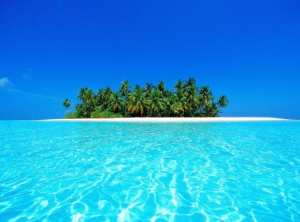Panama is a small yet diverse country that is home to many indigenous groups, including the Kuna people. The Kuna people are an indigenous group that resides in the San Blas Islands and along the north coast of Panama. They are known for their rich culture and traditions, which have been preserved and embraced by modern Panamanians. In this blog post, we will explore the culture of the Kuna people and how it is integrated into modern Panamanian society. We will also discuss the San Blas Islands and how to visit them.
The origins of the Kuna people in Panama
The Kuna people are believed to have originated in South America and migrated northward into what is now Panama over 500 years ago. They are known for their distinctive traditional dress, which features bright and colorful molas. Molas are a type of textile art that are made by layering different colors of fabric together and then cutting out intricate designs. These designs are then sewn onto the traditional Kuna blouse, known as a “dulemola.”
The Kuna people have a deep connection to nature and the environment. They believe that all living things are interconnected and should be treated with respect. The Kuna people also have a strong sense of community and family. They live in small, tight-knit villages and work together to support each other. Traditional Kuna homes are made of wood and thatch, and are built on stilts to protect against flooding.
Understanding more about Kuna culture and governance
One of the most fascinating aspects of Kuna culture is their system of governance. The Kuna people have a unique form of government that is based on a system of councils. Each village has its own council, and the councils from different villages come together to form a larger governing body. This system allows for democratic decision-making and ensures that all voices are heard.
The Kuna people have also maintained a strong connection to their traditional beliefs and customs. They practice a religion that combines elements of Catholicism with traditional Kuna beliefs. One of their most important religious ceremonies is the “dugudua,” which is a coming-of-age ceremony for young girls. During this ceremony, the girls are secluded for a period of time and taught about traditional Kuna beliefs and customs.
The role of the Kuna in modern Panama
Today, the Kuna people continue to embrace their traditional culture, but they have also adapted to modern society. Many Kuna people have jobs in tourism or other industries, and some have even become politicians. The Kuna people have also been able to preserve their culture through the promotion of eco-tourism in the San Blas Islands.
The San Blas Islands are a group of islands located off the coast of Panama. The islands are home to the Kuna people and are a popular destination for tourists. The islands are known for their pristine beaches, crystal-clear waters, and vibrant coral reefs. The Kuna people have been able to preserve their traditional way of life on the islands, and visitors can experience this unique culture firsthand.
To visit the San Blas Islands, visitors must first travel to Panama City. From there, they can either take a domestic flight to one of the airports near the islands or take a 4×4 vehicle to the port town of Carti. From Carti, visitors can take a boat to one of the islands.
While on the islands, visitors can participate in a variety of activities, including snorkeling, scuba diving, and fishing. Visitors can also learn about this indigenous culture by visiting the traditional villages on the islands. These villages are made up of small thatched-roof huts and offer a glimpse into the traditional way of life of the Kuna people. Visitors can also purchase traditional Kuna crafts, such as molas and baskets, from the locals.
The indigenous people of Panama have a rich and vibrant culture that has been preserved and embraced by modern society and is still flourishing to this day. Whether you are relocating to Panama or simply visiting Panama, it’s important to understand this and other native cultures to better understand the country and its people as a whole. To learn more about the Kuna, indigenous culture in Panama, or any other questions about Panama before your arrival, contact us here now.
